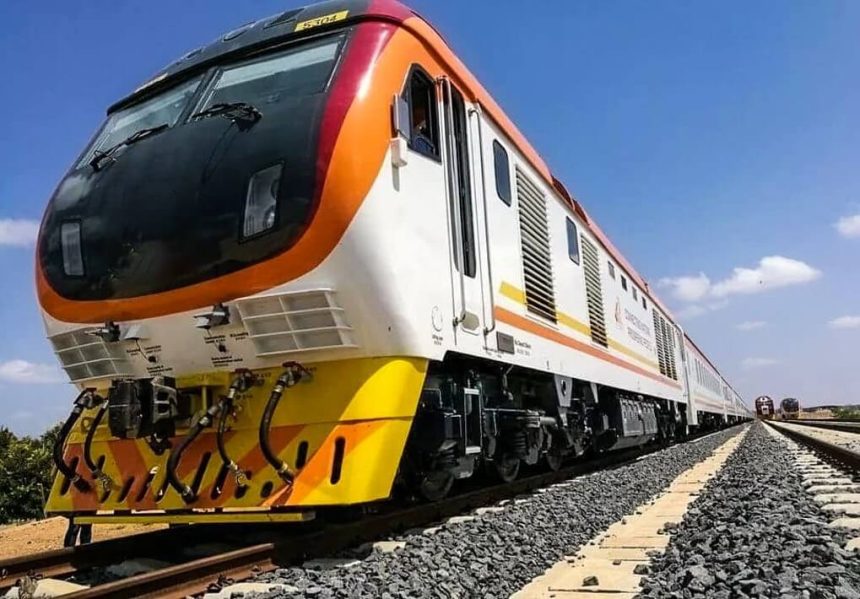Tanzania and Burundi have floated a tender for designing and constructing an electrified railway that will initially connect the two countries and pass through the Democratic Republic of Congo or DRC, as the countries look to tap AfCFTA, the world’s largest single market, and create the continent’s second multinational electrified railway.
The African Continental Free Trade Agreement is set to combine Africa’s population of nearly 1.4. billion people and markets with a current combined GDP of over US$ 3 trillion, into a single market.
About 282 Kilometer of an electrified Standard Gauge Railway or SGR line will be built from Uvinza in Tanzania (off the Tabora – Kigoma SGR line), across the international border along Malagarasi river to Musongati and onwards to Gitega, both in Burundi.
“The two Governments of Tanzania and Burundi have entered into a bilateral agreement to implement this multinational project as a single project within Tanzania and Burundi territories,” according to the tender document.
The project, set to be implemented in 5 years upon completion will become Africa’s second cross-border electrified rail after Ethiopia and Djibouti launched the continent’s first fully electric multinational railway line, in 2016.
With a length of 750 kilometers, the Ethiopia-Djibouti line from Addis Ababa to the Red Sea port of Djibouti is still the longest of its kind on the continent. The US$3.4 billion project received 70% of its funding from China’s Exim Bank.
The tender document for the Tanzania-Burundi line indicates that the governments of Tanzania and Burundi have applied for construction funding from the African Development Bank.
Tanzania has recently begun an aggressive push to modernize its railway infrastructure, revamping its aging regional rail networks to facilitate cross-border trade.
In December 2022, the East African country finalized a US$2.2 billion deal with China that will see a total SGR network of 2,561 kilometers, linking the port city of Dar es Salaam to landlocked countries like the DRC, Rwanda, Burundi, and Uganda.
So far, costs are at US$10.04 billion, with the line poised to create the longest modern rail network in Africa when completed in 2026.
With this investment, Tanzania is looking to vault ahead of regional peers including East Africa’s largest economy, Kenya, by providing the most efficient trade routes in the bloc.
“Upon completion of the SGR, Tanzania will be in a better position to utilize its strategic geographical positioning to facilitate cross-border trade,” Tanzania’s President Samia Suluhu Hassan was quoted by France News Agency, AFP.
In 2014 Kenya entered a tripartite agreement with the governments of Rwanda and Uganda to build a standard gauge railway but the network is yet to cross international borders, marred by criticism of the project not delivering value for money. In November 2022, Uganda pulled out of the deal after terminating its 8-year contract with China Harbour Engineering Company (CHEC) which was to construct a 273-km SGR line from Malaba, on the Kenya border, to Kampala.
Subsequently, Uganda initiated talks with a Turkish firm, Yapi Markezi, to help it raise funds to construct the line, which would give Uganda a direct link to Kenya’s main harbor in Mombasa.
The Turkish firm has ongoing rail projects in Uganda and is also executing part of the SGR Railway project in Tanzania.
In August 2022, the Tanzanian and Zambian governments resolved to upgrade their 1,160km cross-border railway, Tazara (also known as the Uhuru, or Tanzam Railway), to bolster bilateral ties.
A World Economic Forum Insight report 2023, ‘AfCFTA: A New Era for Global Business and Investment in Africa,’ projects the world’s largest single market will increase intra-African freight demand by 28%, leading to demand for almost 2 million trucks, 100,000 rail wagons, 250 aircraft, and more than 100 vessels, by 2030.
“Unlocking intra-regional trade will skyrocket the demand for logistics, with more small and medium-sized enterprises needing logistics providers to connect to bigger markets,” according to the report.
bird story agency





